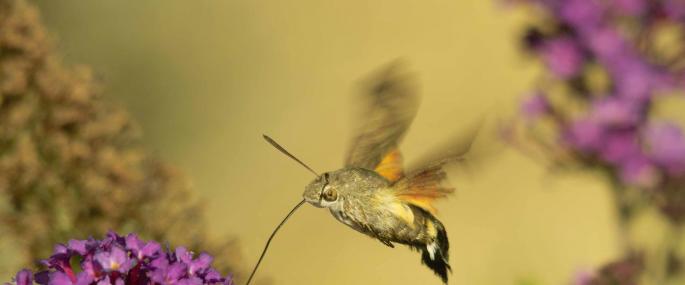The hummingbird hawk-moth is a small, day-flying hawk-moth. Hummingbird hawk-moths are summer visitors, migrating here from Southern Europe in variable numbers each year. In some years, they can be common and may frequently be seen in gardens hovering like hummingbirds to feed on the nectar of honeysuckle, red valerian and many other flowers. They can also be found in woodland edge, heath and shrubby habitats. The caterpillar feeds on various species of bedstraw, so the female adult moth lays her eggs on the buds or flowers of these plants.
Moths such as the Hummingbird Hawk-moth are common visitors to gardens and can be a joy to watch. To attract moths and butterflies into your garden, plant nectar-rich borders and shrubs for them to feed on. To find out more about encouraging wildlife into your garden, visit our Wild About Gardens website: a joint initiative with the RHS, there's plenty of facts and tips to get you started.
